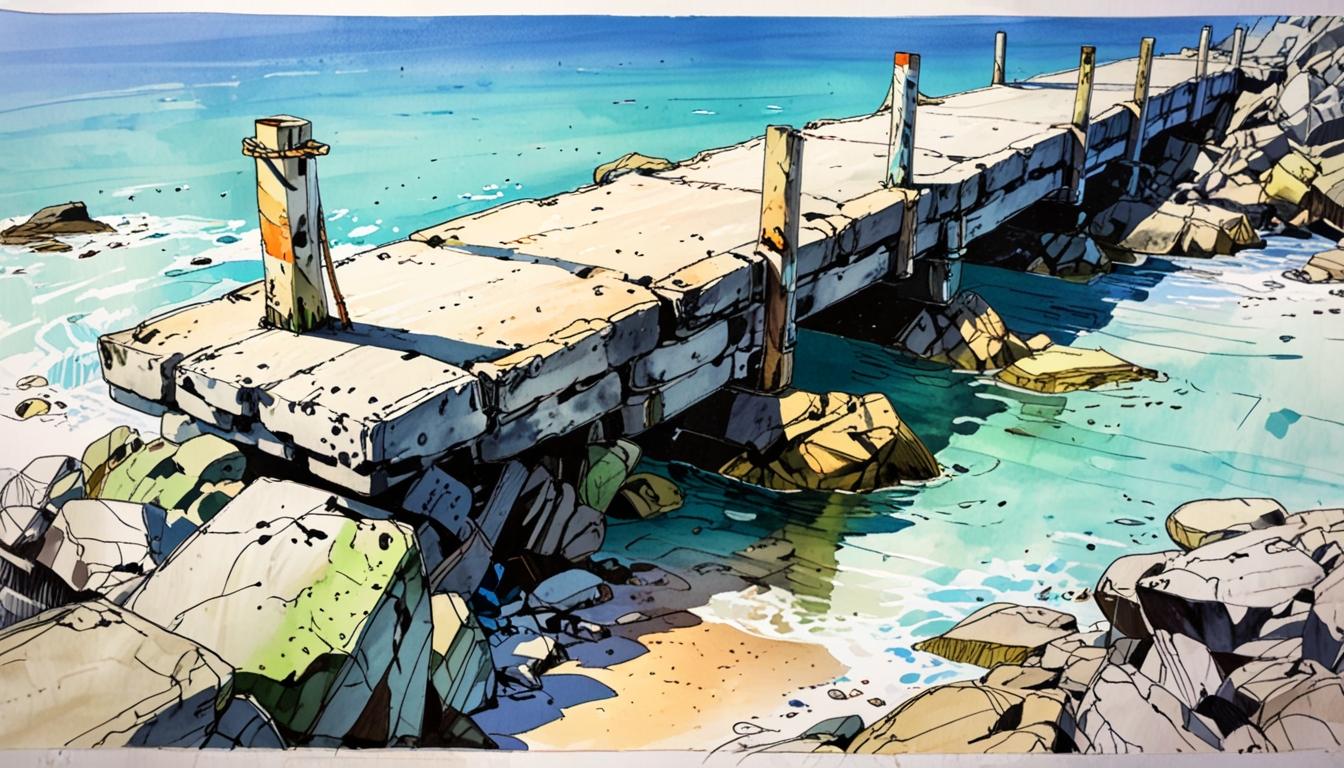The debate over the future development of the port in the British-administered Malvina Islands has intensified, revealing significant divergences regarding construction approaches, financial strategies, and the broader management of the territory. Central to the discussion is a proposal put forward by Gerald Cheek, a local settler well-acquainted with aviation, who advocates for a pier constructed predominantly from the island’s abundant local stone rather than imported steel.
Cheek, writing in Penguin News under the headline "Rocks or Steel," argues that using steel for the new pier would incur substantial costs due to the need to procure and transport the material from the United Kingdom. Furthermore, he warns of the comparatively short lifespan of steel structures in the harsh marine environment, where corrosion necessitates frequent and costly repairs or replacement in the future.
In contrast to this view, Cheek recalls the enduring example of a stone pier built more than 100 years ago in the harbour of Puerto Argentino, which still stands robustly today. This example supports his argument that a stone pier would offer a more sustainable, durable, and cost-effective solution by leveraging local resources. This perspective is echoed by another local resident, Norman Clark, who also emphasises the merits of using indigenous materials amid global economic uncertainties and concerns about the stability of the UK steel industry.
The proposal has sparked controversy, further inflamed by sharp criticism directed at the British colonial administration governing the islands. Norma Edwards, a former member of the Legislative Assembly, expressed severe disapproval of the administration's recent decision to secure international financing amounting to £150 million (approximately $194 million) designated for the port project. Speaking candidly, she stated, "They don't have two brains in the backside," highlighting what she sees as poor judgment and prioritisation.
Edwards pointedly criticised the long-term financial implications, noting that servicing the debt will continue until 2050, and questioned whether the port development should take precedence over other critical needs such as pension reform, hospital modernisation, and the upgrading of the power plant. She also spotlighted previous infrastructure investments that have failed to deliver value, including a wool depot described as "useless," suggesting a recurring pattern of public funds being mismanaged.
The port debate unfolds against the backdrop of an enduring sovereignty dispute between the UK and Argentina over the Malvina Islands. Plans to replace the existing port—currently utilising infrastructure established post-1982 conflict—have brought these strategic and economic questions to a head. The advocacy for an "eternal pier," forged from sturdy local stone, resonates with themes of sustainability and fiscal prudence, offering an alternative that draws upon the region’s historical construction methods to envision a lasting maritime facility.
Additionally, discussions have broached the potential use of Puerto Yegua (known to the British as Mare Harbour), which serves as an important NATO military base installation. Yet, the feasibility of employing this site for commercial and tourism purposes remains uncertain.
This renewed controversy surrounding the Malvina Islands' port reflects longstanding political and economic tensions that continue to shape the islands’ future. Notably, the Argentine government has chosen to grant Great Britain full autonomy in proceeding with infrastructure projects on the islands, underscoring the complexity and sensitivity of the issue within this contested territory.
Source: Noah Wire Services
